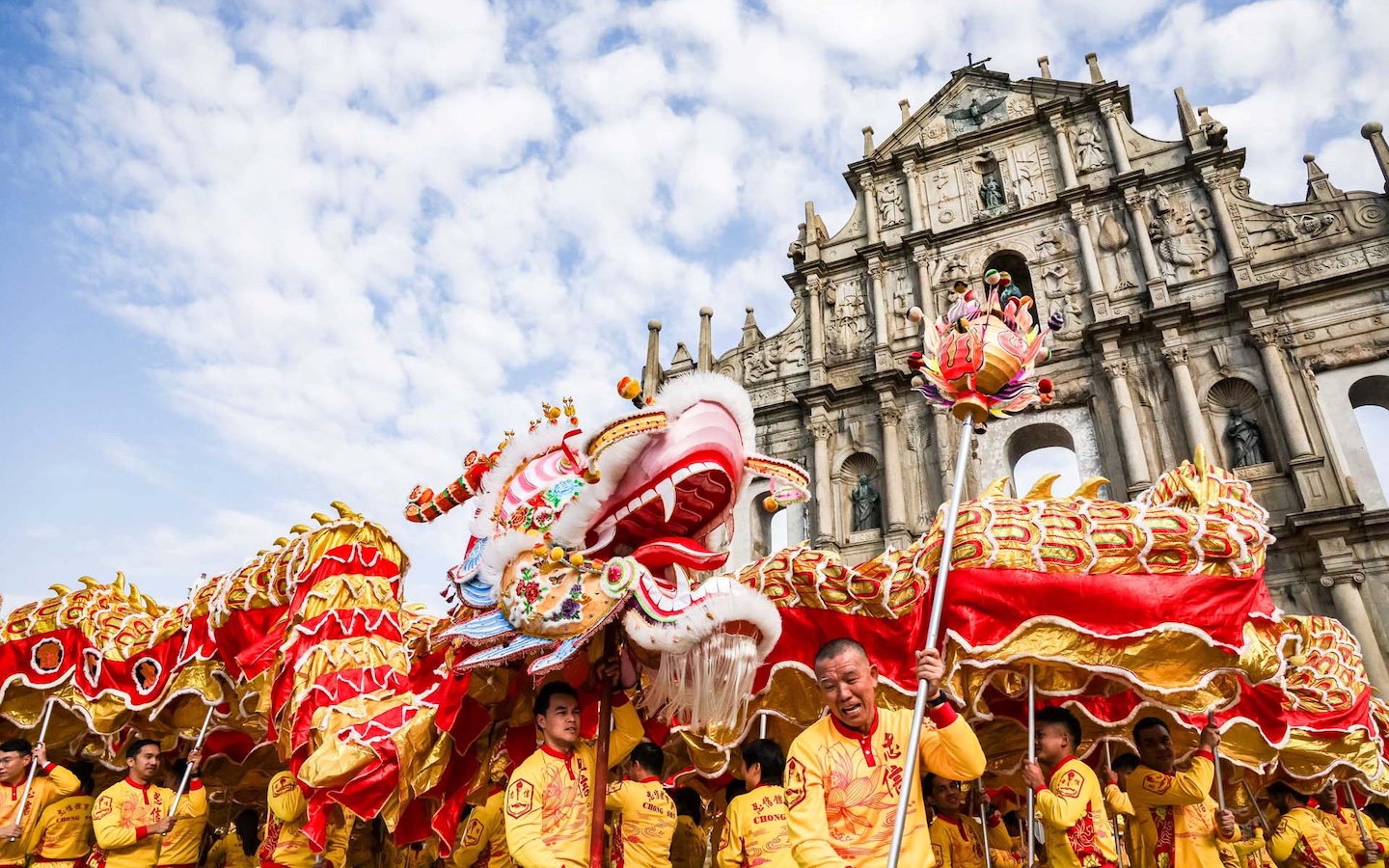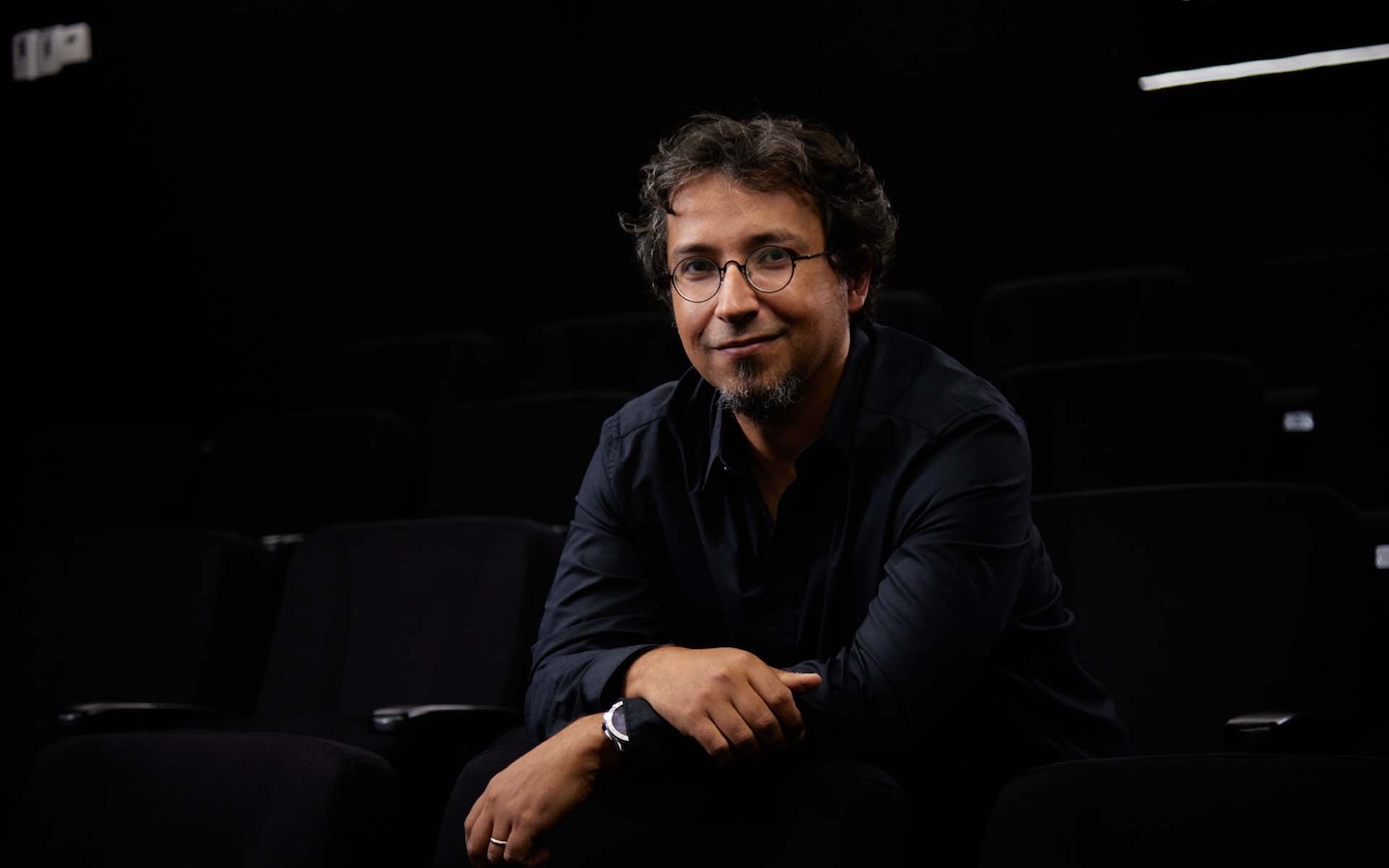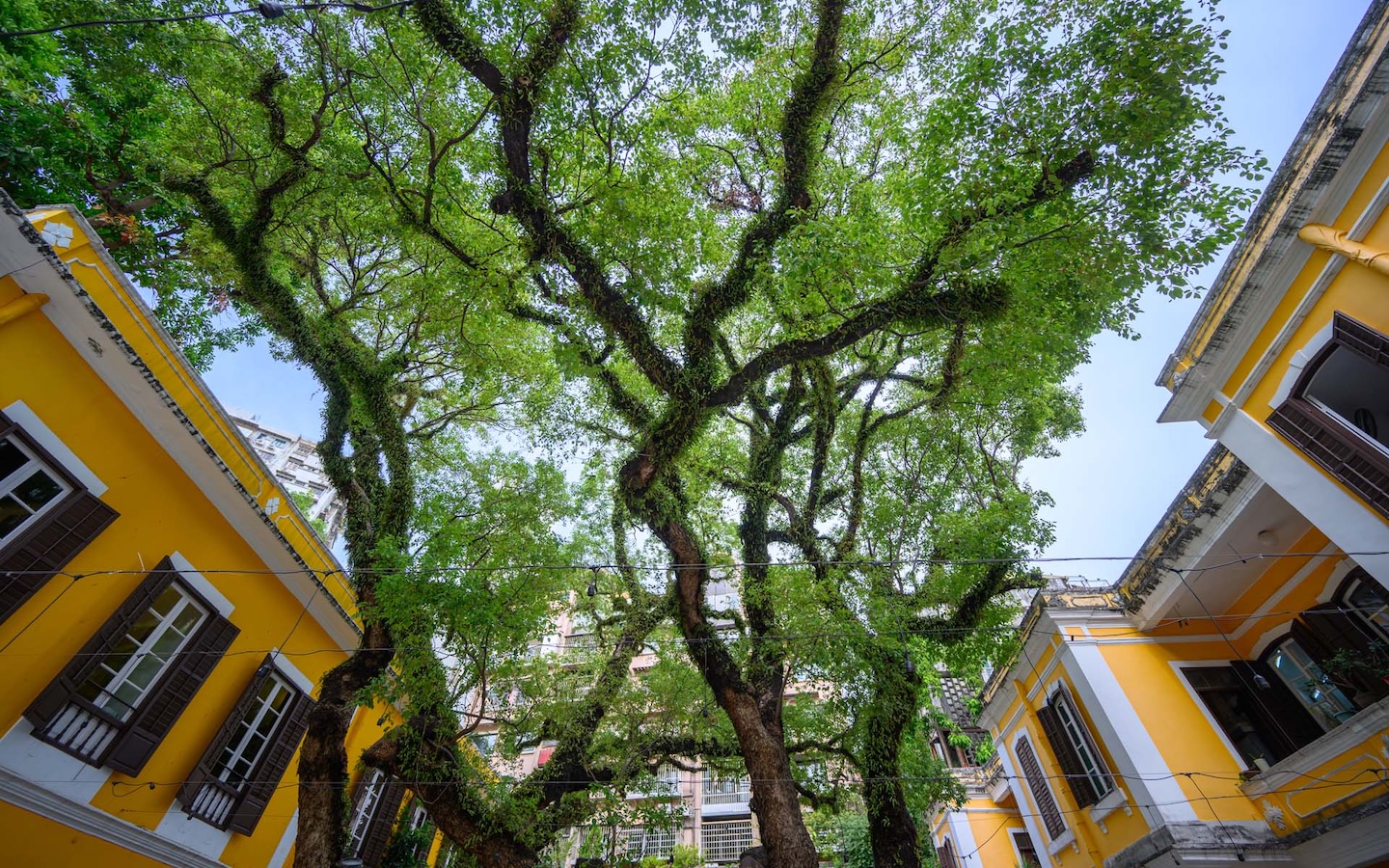TEXT Cláudia Aranda
The Sinulog Festival, one of the most popular religious celebrations in the Philippines, is held annually every third Sunday of January. In Macao, this tribute to the Child Jesus is also an occasion for the Filipino community to come together and ease the homesickness, while others take centre stage to shine as dancing queens.
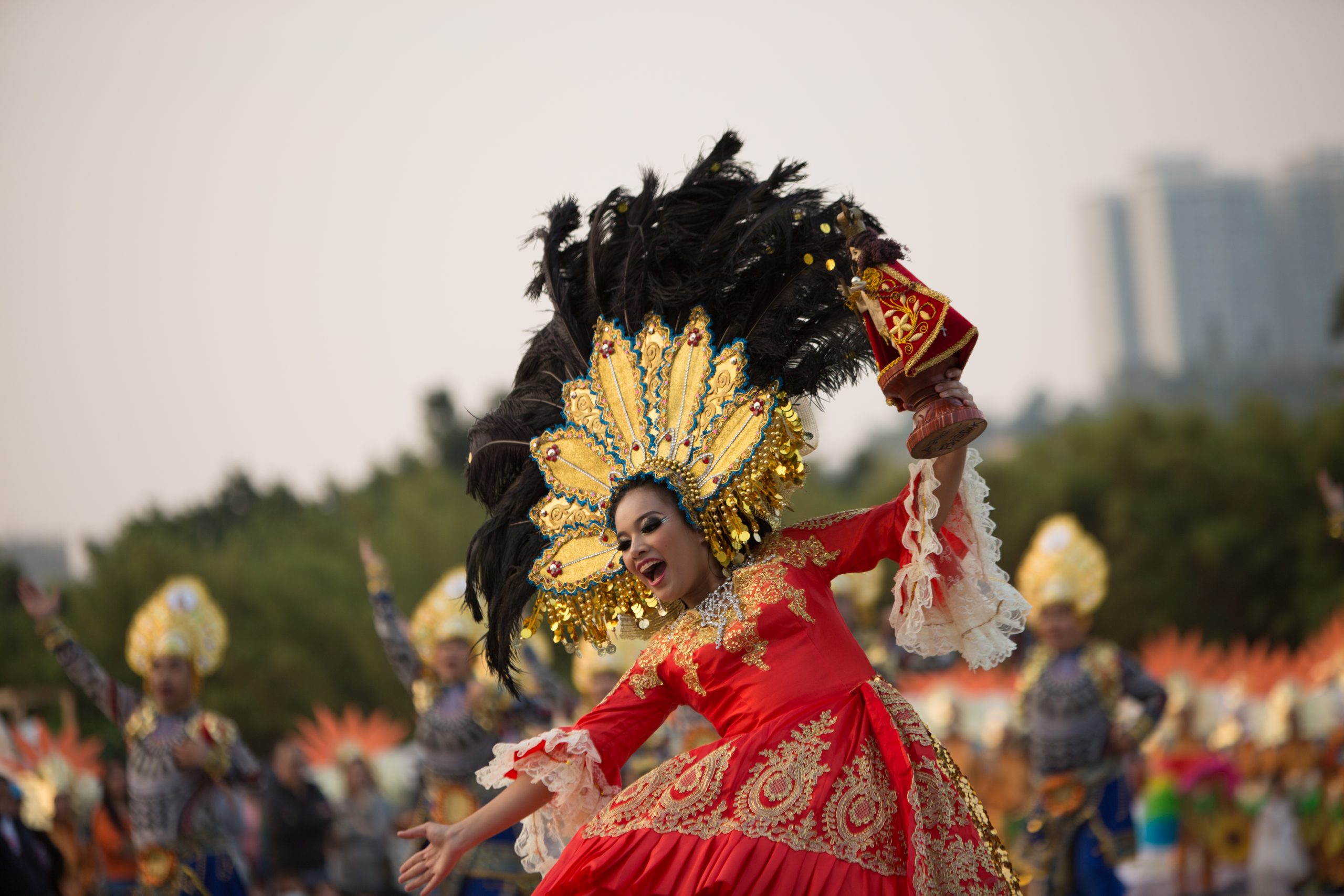
For a large contingent of the Filipinos living and working in Macao, the Sinulog Festival is a once-a-year opportunity to experience their own Cinderella-style transformation, from cleaners, housekeepers, security guards or domestic helpers to dazzling queens. Shining in their sparkling makeup and glamourous clothes, they pour their hearts and souls into showing off their acting and dancing skills.
Their elaborate costumes are paid for out of pocket or sponsored by local benefactors, explained the queen of one of the groups in the parade, herself dressed in a white ball gown, carrying a golden paper-made crown covered of flowers and a small replica of Santo Niño (Child Jesus). Others shined in fairy-tale costumes of red, green or blue, topped by peacock feathers or extravagant hats.
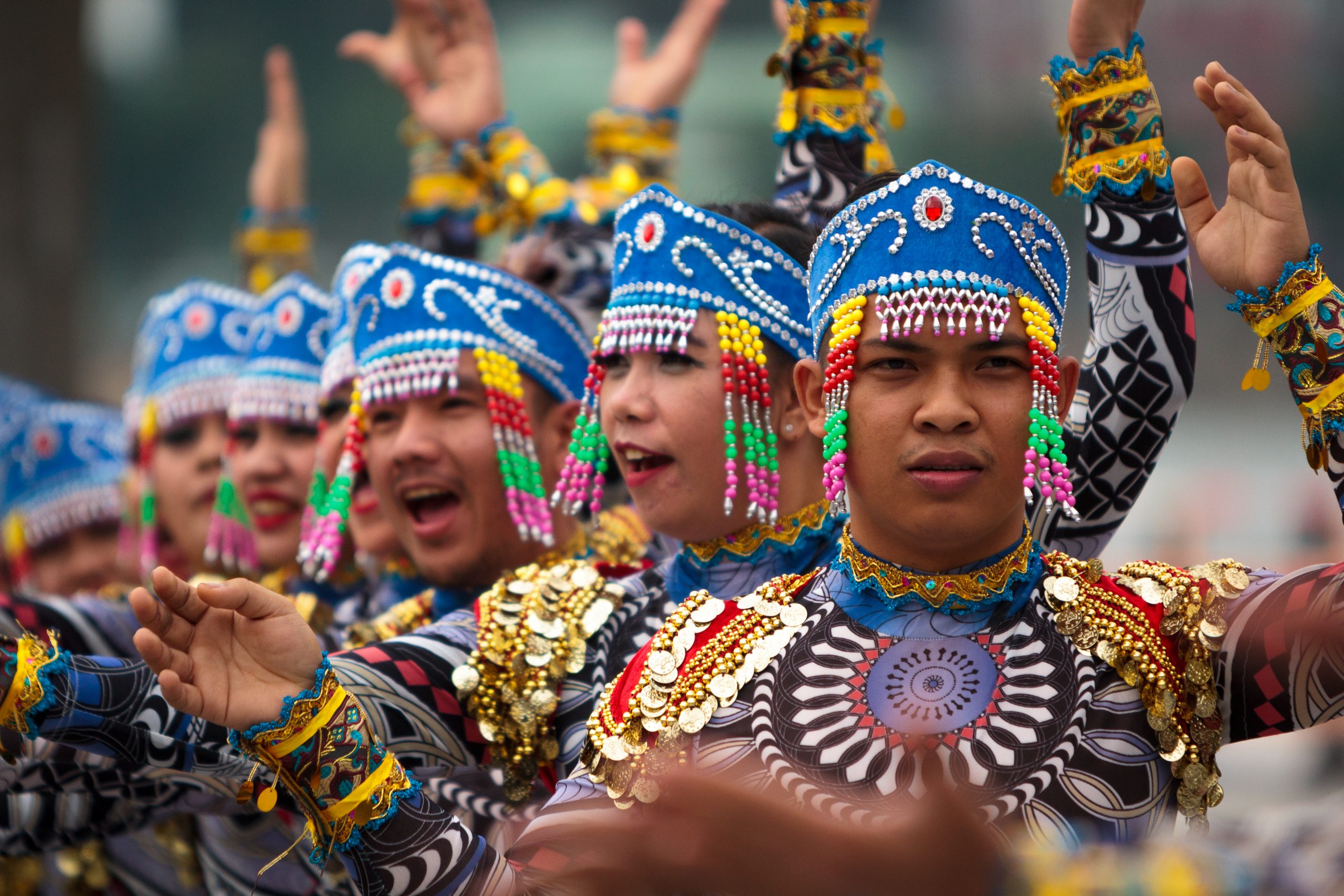
On 20 January, devotees flocked to Saint Augustine’s Church for an 11am Mass held at the church, which serves as the religious heart of the local Filipino community. Carrying replicas of Santo Niño dressed in brilliant red, green and gold clothing, a few hundred Filipino women and men gathered after Mass to dance in front of the church. Father Andy Vergara, who led the Mass, has been a priest in Macao since 2014 and is one of the three Filipino ecclesiastics in the Pastoral Care for Migrants Workers.
Playing drums outside was a group of young men, aged 19 to 23 – João Pascual, Jai Cuevas, João Magat, João Paulo Alfonso, Mac Ramos, and Marco Rodriguez – all born and raised in Macao. Coincidentally, they were also registered with the same Portuguese name ‘João,’ the preferred option from a list of mandatory names at the time they were born. Despite having been brought up immersed in a different culture, every year they get together to join the Sinulog.
“There are six competitors [in this year’s Sinulog Dance Competition] and we will be the ones providing the beat for the dancers,” they explained. The beat, called Cebuano, comes from the Philippines. “Because Sinulog comes from Cebu, we got the inspiration from the beats by watching videos,” they said, adding that the result is a kind of “Filipino samba.”
Connie, Emily, Jocelyn – all domestic workers on their day off – joined the dancing outside the church. “We always participate and assist in what is needed,” said Jocelyn, a non-resident worker who’s lived in Macao for eight years.
Finding home in the festival
The Sinulog festival in Macao started “as simple devotion, like a family event organised to venerate the Santo Niño,” said Violeta Duran, president of the Santo Niño de Cebu in Macau Association, originally a small group of devotees in 2000 before being officially established in 2003.
“Later, when we decided to open this event to the public and we started to organise it with the Macao government, we created the association and the Sinulog entered in the Macao festivities’ calendar,” she explained.
“Santo Niño is really important for us, because it opened our eyes to Christianity. Before we did not know about Jesus,” Duran reflected. A graduate in commerce and single parent of three, Duran has lived in Macao since 1993, working as a non-resident domestic worker. “It is very relevant for us and that’s why our faith is very strong in Santo Niño.”
The Santo Niño fiesta is also an occasion to convene the community. “The Sinulog is considered to be a big event for the Filipinos in the sense that all Filipinos unite. Those available at the time, they come to join the event,” Duran said. “It helps us a lot, because in Macao we are foreigners. With this event, the home sickness will be lessened because, for a brief moment, we feel like we are in the Philippines; people unite to feel at home.”
The Sinulog festival, a ritual prayer-dance glorifying Santo Niño held every third Sunday of January, is considered one of the most popular devotions and religious celebrations in the Philippines. The event marks the country’s conversion to the Roman Catholic faith following the arrival of the Portuguese explorer Fernão de Magalhães, who planted the cross on the shores of Cebu in 1521, claiming the territory for Spain.

Aside from the religious aspect, Sinulog is also famous for the dance parade. “Sinulog comes from the Cebuano word sulog, the dance step of Sinulog, which describes the water current movement and the forward-backward movement of the Sinulog dance,” explained Father Ryan June Real, a member of the Pastoral Care for Migrants Workers and one of the attendants of the parade.
This year, the festival featured a total of six groups gathering at the Sai Van Lake Square, outside Macau Tower, and then parading through the surrounding area. The participant teams included a group from Hong Kong, Queen City of the South, but it was the Bisdak Association of Macau that took the grand prize, followed by the Orient Premier Tribe and the Debutantes in Macao as first and second runners-up respectively.
Nine days of nightly Novena prayers for Santo Niño precede the festival, sponsored by different benefactors and organisations. In Macao, small groups gathered for prayer in the Catholic Pastoral Center, not far from the Inner Harbour, and in the New Allied Cleaning Services’ office in Areia Preta.
Sinulog comes from the Cebuano word sulog, the dance step of Sinulog, which describes the water current movement and the forward-backward movement of the Sinulog dance.
Father Ryan June Real
There, a hand-painted wood image of Santo Niño dressed in golden clothes sits upright on a table in front of the main entrance, surrounded by other replicas of the Child Jesus. Jamelito Escote, businessman and owner of the company (established in 1994), has opened his door to worshippers since 1999, welcoming local Filipinos to pray in the run up to Sinulog.
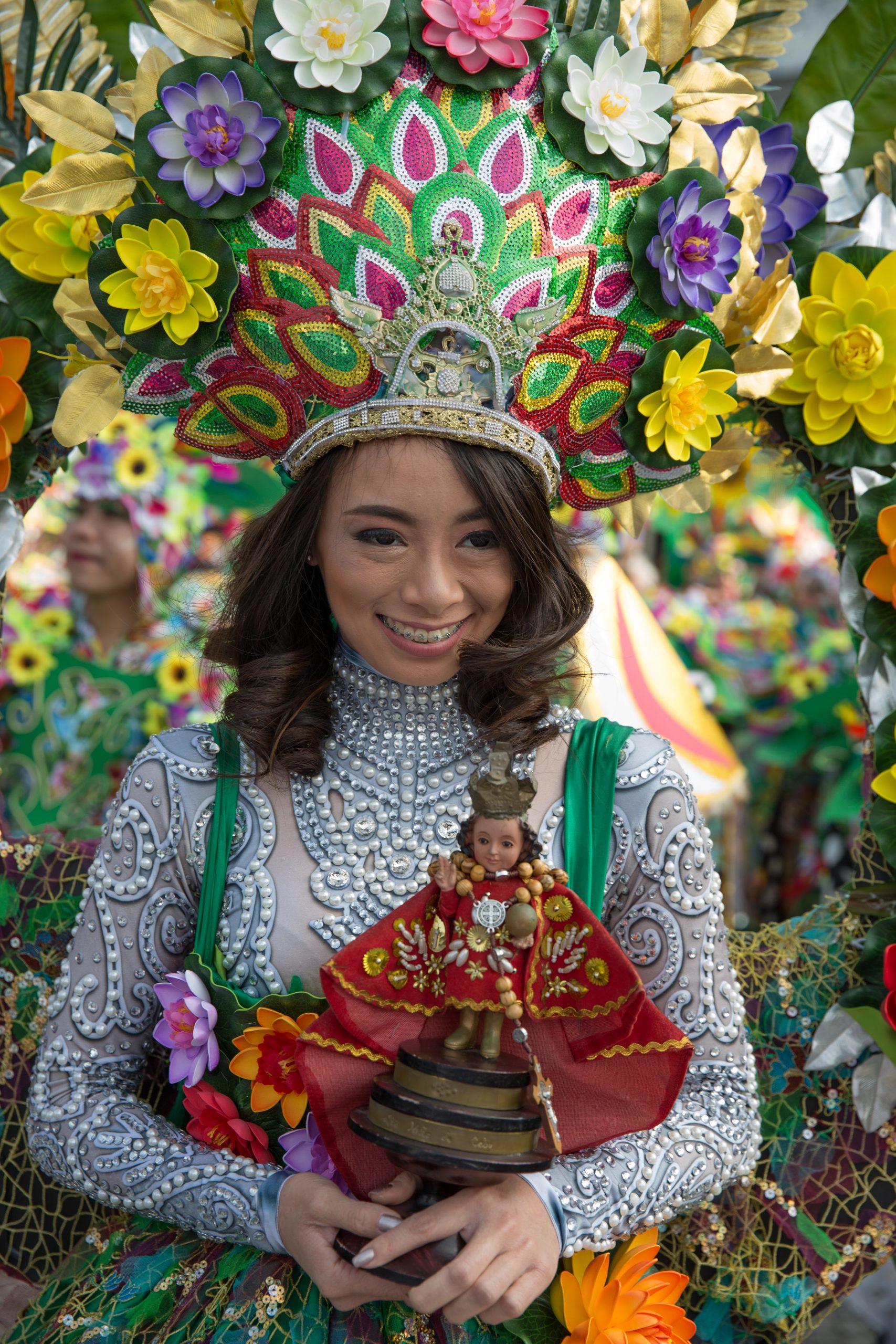
“It is our tradition as Catholics to celebrate and praise this image,” said Escote, himself a devotee of the Child Jesus and resident of Macao since 1988. Food is served after Mass on the office’s ground floor; tables laden with spaghetti with pork and vegetables known as pancib, the vegetarian dish pakbet, and other Filipino recipes. Everyone is welcome to join.
Life on the ‘Filipino Street’
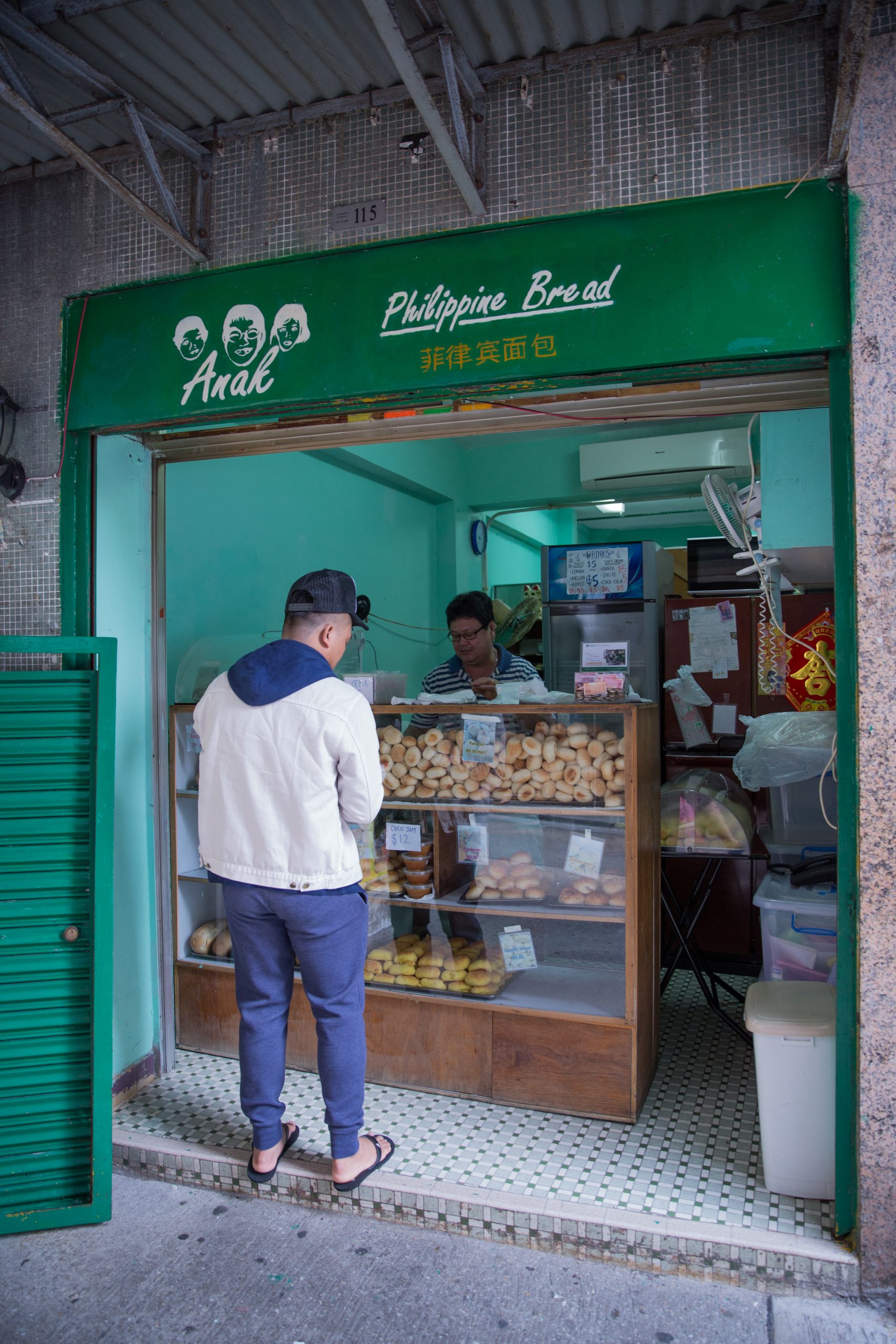
Like the drum players at the Sinulog, Francisco José Fajardo, a former IFT (Institute for Tourism Studies) student, is also a resident, born and raised in Macao. Standing behind the counter of the small pastry shop on Rua da Alfândega, widely known as ‘Filipino Street,’ Fajardo shows the desserts. There are chocolate brownies, cheesecake, or the popular Filipino rice and coconut multi-coloured sticky pudding, sapin-sapin.
He used to work in the casino industry but started running this small business two years ago when his parents, owners of the original Anak Philippine Bread, opened 16 years ago on the same street, suggested he become the shop’s manager and baker.
“The customers are mostly Filipinos, around 70 per cent, while 30 per cent are Chinese; Portuguese are very few,” said Fajardo, who learned the recipes from his mother.
Walking down the one-way street a few metres before turning left onto Happiness Street (Rua da Felicidade), there was a small crowd of Chinese, Filipinos, Indonesians, and Thais gathered at the bakery. They ordered pandesal, a type of plain bread, or pan de coco with coconut; putopao or siopao, the Philippine version of Cantonese steamed pork buns. It’s day one in the 2019 Chinese New Year’s calendar and the narrow street was quite busy, as many Filipino and Indonesian domestic helpers were off duty.
“We also have Filipino customers coming from Hong Kong. It’s much easier with the new bridge, and they want to have the experience of crossing the sea by bus,” said Crisostomo Fajardo, owner and founder of Anak, referring to the new Hong Kong–Zhuhai–Macao Bridge.
Fajardo, father of Francisco Fajardo, explained that he and his wife, Lucelle, have been in Macao since 1989. He used to work in the hotel industry, but in 2003, the couple decided to take the risk and abandoned their jobs to start the bakery shop. Called Anak, or ‘child,’ it is also the name of an iconic Tagalog song written by the Filipino folk-singer Freddie Aguilar.

“We were the first Filipino shop to open on this street; before, there were only Chinese businesses,” said Fajardo, explaining that all the Cantonese he speaks was learned through daily contact with local customers during his 16-hour work days. For only five patacas, customers can take home six pieces of pandesal. “The price remains the same as when we opened 16 years ago,” he noted.
Today, many fewer Chinese shops remain open on Rua da Alfândega, competing with Filipino restaurants, hairdressers, fashion boutiques, or takeaway providers like Onie Rosa’s little window-shop, Avilandia Café. “Do you want to taste my food?” she asked in Portuguese, pointing out to the multi-coloured Filipino dishes displayed in the glass counter.
Rosa married a Portuguese citizen in 1985 and holds a Macao permanent resident identity card, like the Fajardo family. Rosa, who will be 60 years old this year, is a graduate in chemistry from the Philippines. She used to teach English at Colégio de Santa Rosa de Lima before getting a job at CEM (Companhia de Electricidade de Macau), where she worked as a chemical analyst for 25 years.
The shop, opened by Rosa in 2016, became a kind of meeting point for the Filipino community on their days off. Most are domestic helpers or hotel and casino employees, mainly non-resident workers holding a work permit or ‘blue card,’ normally with a limited-term visa, depending on the recruiting employer or company.
Filipino presence in Macao
The Filipino community in Macao comprises a large portion of the city’s non-resident workers, representing 16.6 per cent, according to the Macao Statistics and Census Service. Most of the city’s non-resident manpower, 62.6 per cent, comes from mainland China.
There are 31,470 non-resident Filipinos workers in Macao, half of them working as domestic helpers and the rest as professional workers as casino and hotel employees, according to data provided by the Consulate General of the Republic of the Philippines to Macao, as of November 2018. The top three industries hiring Filipino workers are domestic work (15,496 workers), followed by hotels, restaurants and similar activities (6,033), and real state, renting, and business activities (4,805). According to the consulate data, other professions include architects, engineers, chemists, pharmacists, nurses, dentists, medical technologists, teachers, and university professors.
While non-residents Filipinos are the majority, there are also 2,407 permanent residents in the territory, as of September 2017. Since the consulate was established in Macao in 2008, the office has registered 1,681 births to Filipino parents. In some instances, “the parent or parents have brought their children back to the Philippines for lack of resources available to keep them here,” Consul-General Lilybeth R Deapera told Macao Magazine in a written interview. She added that non-resident workers also find that “the housing allowance is not enough to finance their own accommodation.”
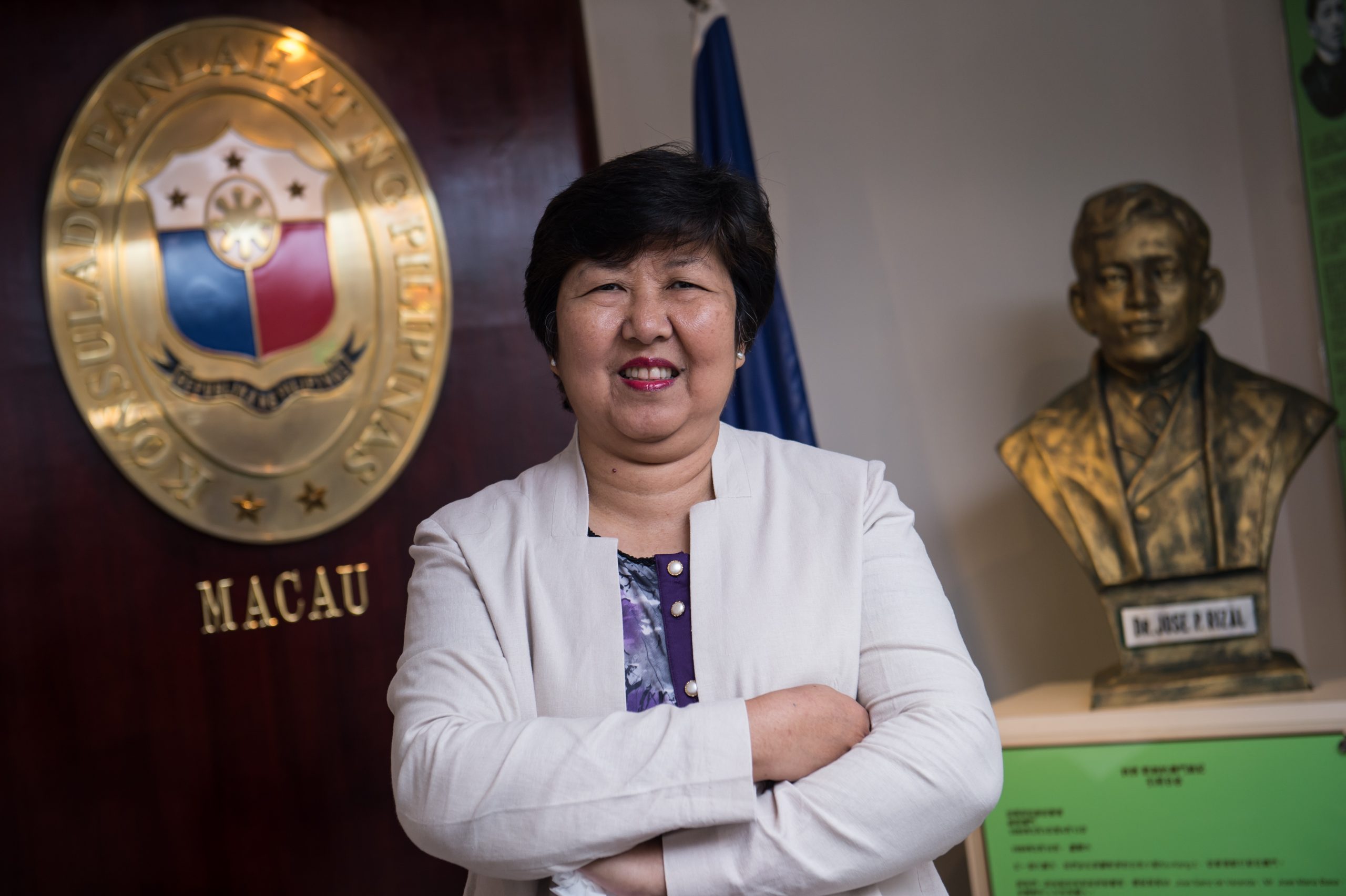
Filipinos who have permanent residency benefit from equivalent advantages and assistance as other Macao residents. “We have to admit that the support and benefits that all permanent residents in Macao get are quite exceptional compared to other countries and to what residents get in Hong Kong and nearby area,” a Filipino academic and Macao permanent resident who preferred not to be named, told Macao Magazine.
“The government support is something that we have to be very grateful and thankful for,” he added, emphasising the support provided “to the elderly, the subsidies for the kids’ education” and the “basic medical services available at the hospital and private clinics.”

